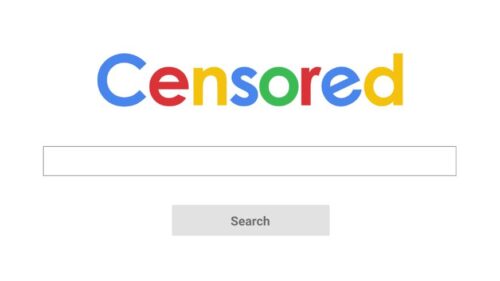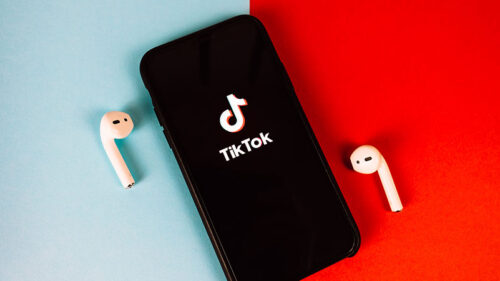TikTok is a short-form video hosting service owned by Chinese internet company ByteDance. Its mainland Chinese counterpart is called Dǒuyīn, meaning ‘Shaking Sound’.
On March 13, the US House of Representatives passed the “Protecting Americans from Foreign Adversary Controlled Applications Act,” which would ban TikTok completely unless it separates from ByteDance. The Senate passed the bill April 23, and US President Joe Biden signed it into law next day. The act gives ByteDance 270 days to act before the ban goes into effect.
This article reveals possible commercial considerations behind the attempt to ban TikTok.
Since its launch, TikTok has become one of the world’s most popular social media platforms. Its proprietary recommendation algorithms are better than those of alternative apps at connecting content creators with new audiences. Many of TikTok’s users are young, making it more attractive for advertisers than social media with aging userbases, like Facebook.
TikTok cuts into Alphabet and Meta’s bottom line
TikTok’s advertising revenue has seen explosive growth. In the final quarter of 2023, advertising spending on the platform reached $1.2 billion, a growth of 43% compared to the first quarter.
In 2024, TikTok’s ad revenue is expected to triple to $11 billion. Its video ad revenue could exceed the combined revenue for Meta (formerly Facebook) and YouTube combined by the year 2027. TikTok’s unique approach to integrating advertisements seamlessly into the user experience contrasts sharply with the more intrusive advertising models of traditional social media platforms.
While Alphabet (which owns Google and Youtube) and Meta have long held a duopoly in online advertising, their market share has recently begun to decline. In 2022, for the first time since 2014, their combined market share dipped below 50%, and it was expected to have fallen further to 44.9% by the end of 2023. This decline is partly due to the innovative strategies of new entrants like TikTok and partly due to external pressures such as privacy changes led by Apple, which have particularly impacted Meta’s ad targeting capabilities.
Meta’s business model depends almost exclusively on ad revenue. In the past year, ad revenue made up 97.5% of sales. In the past, Meta was able to rely on its three billion monthly active users as a moat against competition — roughly one third of the world’s population. Because online businesses are uninhibited by material or geographical boundaries, they can be scaled up indefinitely. Facebook’s meteoric growth in the mid-2008s, crushing its competitor MySpace, proved how this leads to a “winner-takes-all” system, where the dominant site can eliminate any competition.
However, the moat is not invincible; users might get tired of curating a constant stream of pictures of their pets, kids and food plates.
TikTok captures younger audiences
A significant factor in TikTok’s success is its popularity among millennials and Generation Z. Advertisers highly value these younger users, because they are more likely to spend on consumer goods like clothes, electronics and games and are less likely to have established brand loyalties. Further, they have the most influence over current trends.
Younger users are impatient with ads and likely to scroll away when they realize they are being sold to. However, TikTok employs content-driven advertising that is often indistinguishable from regular user content. This disrupts the user experience to a far lesser degree, offering a level of engagement that traditional platforms are struggling to match.
The advertising industry is seeing a broader shift in spending away from traditional giants towards platforms that offer more engaging and innovative ad experiences. TikTok, with its compelling blend of entertainment and commerce, has become a preferred platform for many brands looking to tap into a younger demographic. Furthermore, changes in user privacy preferences and the increasing ineffectiveness of conventional ad strategies on platforms like Meta and Instagram have accelerated this shift.
Threat to US social media landscape
TikTok’s rise in the advertising market is indicative of broader changes in consumer behavior and the digital landscape. As users gravitate towards platforms that offer more authentic and integrated advertising experiences, traditional advertising giants are being forced to rethink their strategies to remain relevant. The future of digital advertising is likely to be dominated by platforms that not only understand the importance of user experience but also continuously innovate to keep pace with changing consumer preferences.
Yet, as users abandon older sites in favor of a disruptive upstart like TikTok, tech giants need to buy more time. It is easy to understand why they would want to eliminate a troublesome adversary.
TikTok’s strategic approach to advertising, combined with its deep understanding of its user base, poses a significant threat to the established order. The ban on TikTok should therefore be seen through the lens of squishing competition rather than concern for its users.
Cui bono?
[Anton Schauble edited this piece.]
The views expressed in this article are the author’s own and do not necessarily reflect Fair Observer’s editorial policy.
Support Fair Observer
We rely on your support for our independence, diversity and quality.
For more than 10 years, Fair Observer has been free, fair and independent. No billionaire owns us, no advertisers control us. We are a reader-supported nonprofit. Unlike many other publications, we keep our content free for readers regardless of where they live or whether they can afford to pay. We have no paywalls and no ads.
In the post-truth era of fake news, echo chambers and filter bubbles, we publish a plurality of perspectives from around the world. Anyone can publish with us, but everyone goes through a rigorous editorial process. So, you get fact-checked, well-reasoned content instead of noise.
We publish 2,500+ voices from 90+ countries. We also conduct education and training programs
on subjects ranging from digital media and journalism to writing and critical thinking. This
doesn’t come cheap. Servers, editors, trainers and web developers cost
money.
Please consider supporting us on a regular basis as a recurring donor or a
sustaining member.
Will you support FO’s journalism?
We rely on your support for our independence, diversity and quality.









Comment